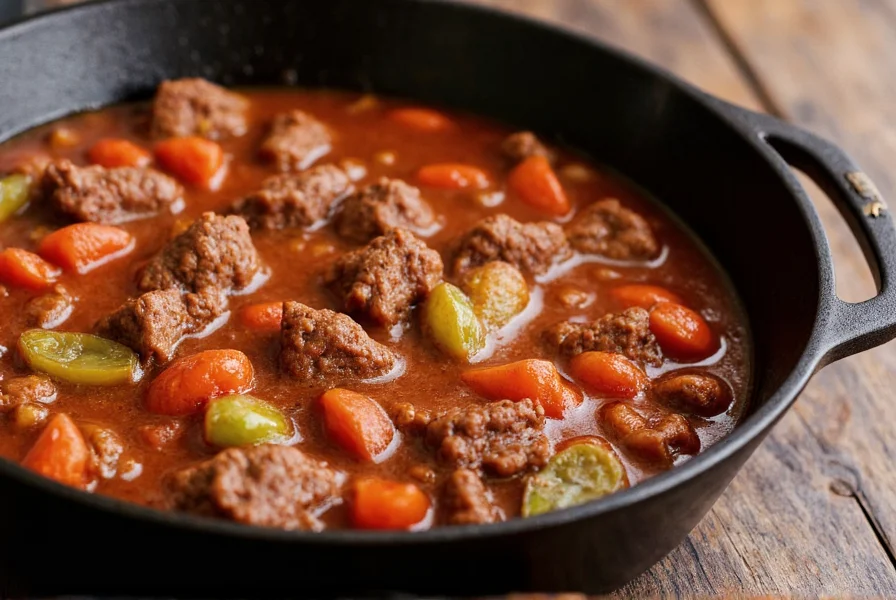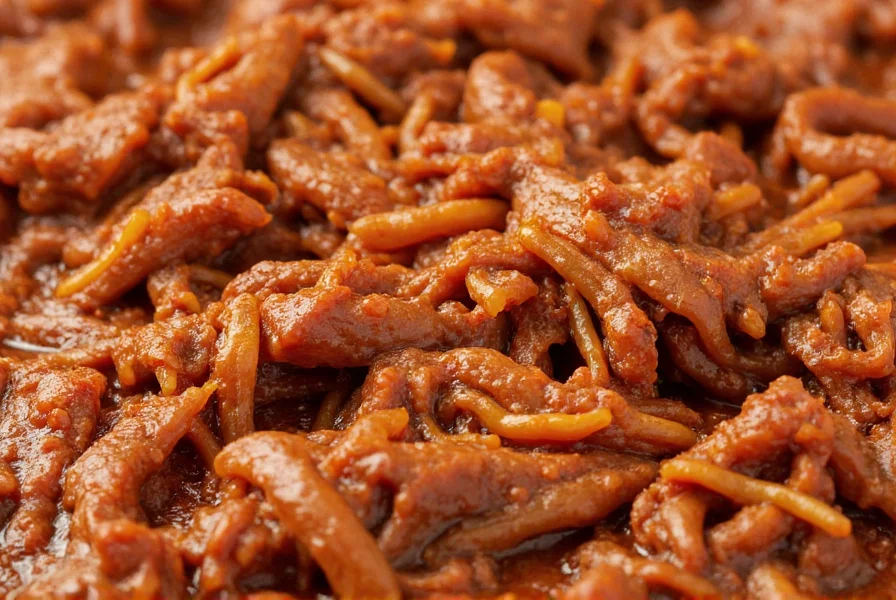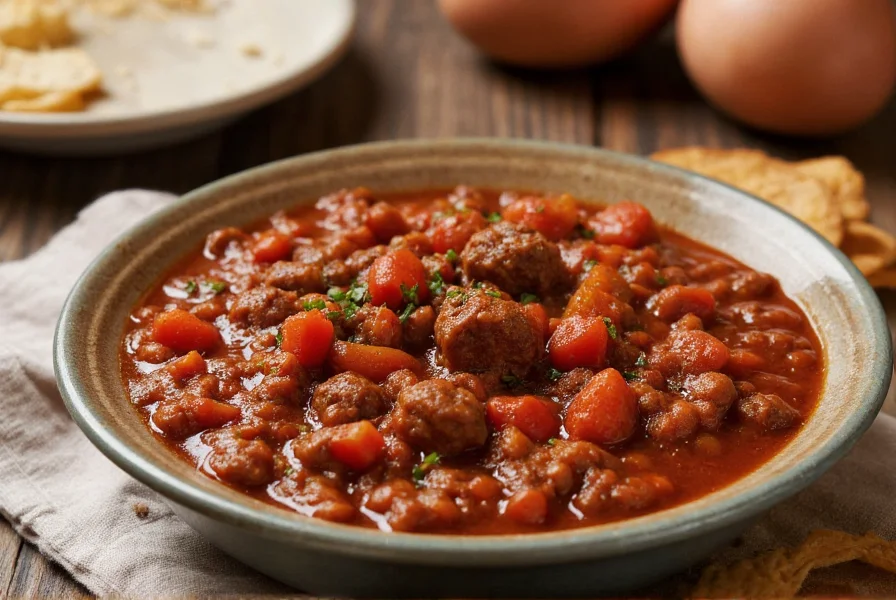Creating an authentic beefy chili requires understanding the fundamental principles that separate exceptional meat-focused chili from ordinary versions. The secret lies not in adding more spices, but in maximizing the natural flavor of quality beef through proper technique. When executed correctly, beefy chili delivers a hearty, protein-rich meal with deep meaty notes that satisfy without overwhelming heat.

Essential Ingredients for Maximum Meat Flavor
The foundation of any exceptional beefy chili starts with ingredient selection. Unlike traditional chili recipes that balance meat with beans and tomatoes, a truly beef-forward version prioritizes meat quality and preparation above all else. Choose grass-fed chuck roast or freshly ground sirloin with 80-85% lean content for optimal fat-to-lean ratio that enhances flavor without excessive greasiness.
| Ingredient | Beefy Chili Ratio | Purpose |
|---|---|---|
| Beef chuck roast | 2 lbs per batch | Rich marbling creates natural tenderness |
| Beef stock | 4 cups | Enhances meat flavor without dilution |
| Tomato paste | 3 tbsp | Umami base without watery texture |
| Dried chilies | 2-3 varieties | Complex heat without vinegar notes |
| Onion | 1 large | Sweetness to balance meat richness |
Step-by-Step Beef-Forward Cooking Process
The cooking technique makes or breaks a beefy chili. Begin by cubing chuck roast into 1-inch pieces rather than using pre-ground beef—this preserves meat integrity and creates varied textures. Sear meat in batches at 375°F to develop fond without steaming, then remove before cooking aromatics. This Maillard reaction creates hundreds of flavor compounds that ground beef alone cannot achieve.
For authentic Texas-style beef chili, skip beans entirely and minimize tomato content. Instead, build layers by sautéing onions until caramelized, adding garlic and spices to toast, then deglazing with quality beef stock. Return meat to the pot with rehydrated dried chilies (ancho, guajillo, and chipotle provide balanced heat), and simmer uncovered for 2-3 hours until meat shreds effortlessly.

Professional Techniques for Enhanced Meat Flavor
Restaurant chefs use several advanced methods to intensify beef presence in chili. Incorporate one tablespoon of fish sauce during cooking—it adds glutamates that amplify meatiness without detectable seafood flavor. Another pro tip: after initial simmering, remove meat pieces, shred them manually, then return to the pot. This releases additional collagen while maintaining texture better than prolonged cooking.
For thicker, more concentrated meat flavor, reduce liquid by 25% before adding meat back. The concentrated stock penetrates meat fibers more effectively, creating a unified flavor profile rather than separate meat and sauce components. Avoid common mistakes like adding meat to cold liquid (causes toughness) or over-spicing (masks natural beef flavor).
Serving Suggestions and Variations
Serve beefy chili with minimal toppings that complement rather than compete with the meat focus. A small dollop of sour cream balances richness, while diced white onion adds freshness without overwhelming. For extra protein density, top with crumbled bacon or additional shredded beef. Authentic versions pair with cornbread for texture contrast, not Fritos or other competing flavors.
Variations include adding roasted poblano peppers for subtle smokiness, or incorporating a small amount of dark chocolate (1 oz per batch) to deepen meat notes without sweetness. For a keto-friendly beef chili, replace traditional thickeners with a roux made from avocado oil and almond flour.
Frequently Asked Questions
What cut of beef works best for truly beefy chili?
Chuck roast is ideal for beefy chili due to its 20-30% marbling, which breaks down during slow cooking into gelatin that enriches the sauce naturally. Brisket provides excellent alternative with deeper beef flavor but requires longer cooking. Avoid lean cuts like sirloin which become tough without sufficient fat content.
Can I make beefy chili without beans while maintaining texture?
Absolutely. For bean-free texture, increase meat content by 25% and add 1 cup of finely diced mushrooms that have been sautéed until browned. Mushrooms provide similar mouthfeel to beans while enhancing umami. Alternatively, include roasted eggplant cubes which absorb flavors while maintaining structural integrity.
How do I fix chili that isn't meaty enough after cooking?
If your chili lacks meat presence, remove 1 cup of liquid and reduce it by half while shredding additional cooked beef. Return both to the pot. Adding 2 tablespoons of mushroom powder or a small amount of soy sauce can also boost umami without altering the beef-forward profile. Never add more raw meat at this stage as it won't integrate properly.
What's the ideal meat-to-liquid ratio for thick beef chili?
The perfect ratio for thick, meat-focused chili is 3:1 meat-to-liquid by volume after cooking. Start with 4 cups liquid per 2 lbs meat, then reduce uncovered for the final 30 minutes. The chili should mound slightly when spooned, with meat pieces clearly visible rather than swimming in broth. Proper reduction concentrates flavors while maintaining distinct meat texture.











 浙公网安备
33010002000092号
浙公网安备
33010002000092号 浙B2-20120091-4
浙B2-20120091-4